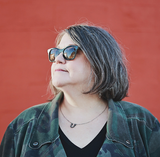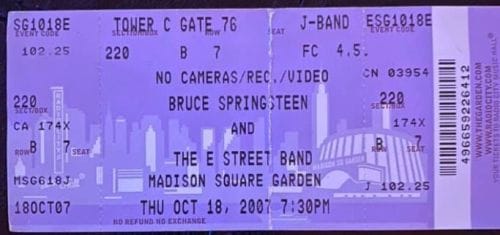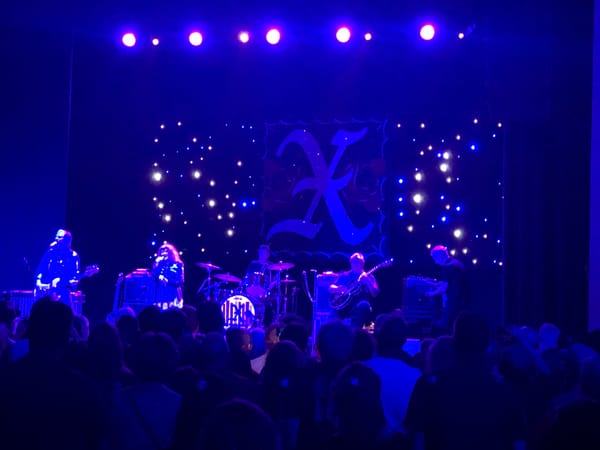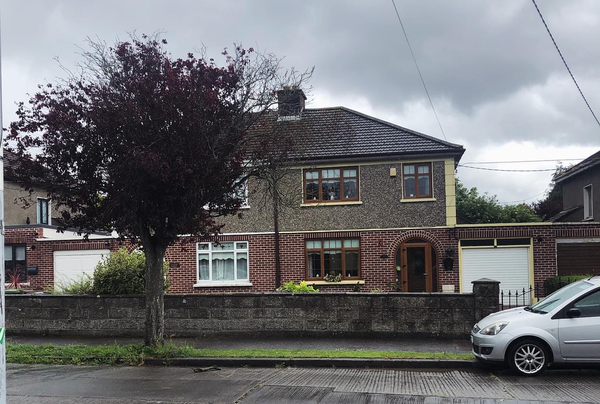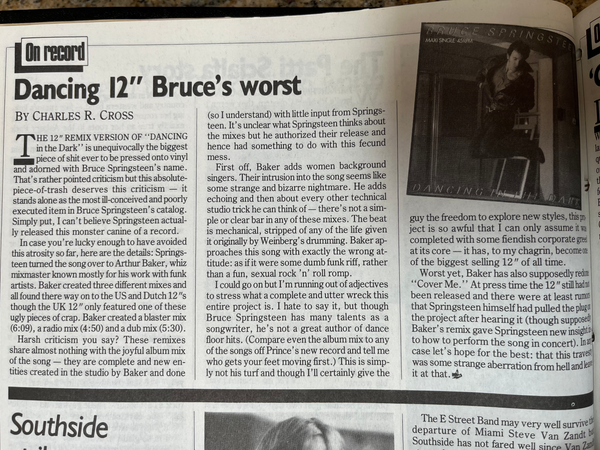Three Minute Record: John Lee Hooker, "Boom Boom"
haw haw haw haw
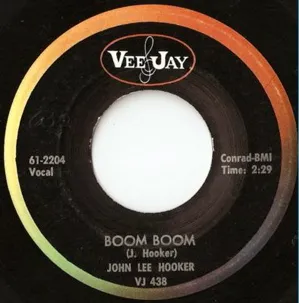
Welcome to Three Minute Record, the edition of this newsletter where we dive into Bruce Springsteen’s best cover versions. You can read more about the purpose of this exercise here and see other volumes here. This week we discuss John Lee Hooker’s “Boom Boom,” the Tunnel of Love tour, and the April 4th show in Los Angeles.
Bruce Springsteen’s 1988 Tunnel of Love Express Tour was intentionally a different kind of show than previous outings. Springsteen himself admits to all of this in his autobiography: it wasn’t an E Street Band record so he deliberately wanted the tour to be different than previous outings. I couldn’t make it to opening night in Worcester, MA, but friends did.1 I begged them to call me after the show and tell me about it, and the first thing everyone shouted down the phone was EVERYONE IS STANDING IN THE WRONG PLACE! The stage had design elements!
My crew and I fancied ourselves as Springsteen classicists and some of us were still mad that instead of Bruce just telling us stories on the Born in the USA tour, two roadies dressed up as a bear and a tree with sunglasses on its trunk (“We could tell it was a shade tree, because it had its shades on!”) We did not need costumes and special lights and now, apparently, stage construction beyond your generic rock and roll stage platform. The songs sounded great, though, which is all we actually cared about. We could forgive or ignore the rest.
I saw the show a week later at the Spectrum in Philadelphia and was very glad I knew that people were going to be standing on different sides of the stage so I didn’t have to spend the first three songs freaking out about it2. The staging bothered me less, the choreography was awkward – these are not people gifted in that way – but it was still Bruce Springsteen and the E Street Band and the songs from the new record absolutely soared live: that moment when the horns come in before the last verse of “Tunnel of Love” still gives me goosebumps.
After the (original) River tour where the setlist was different night after night, another new development was that the TOL set didn’t change much. Springsteen was telling a specific story, he had put a great deal of thought into how he was going to use his songs to tell that story, and the differential was in the performances of the songs. There would be small tweaks and additions along the way in the service of doing that, of course, one of which took place in early May towards the end of the first leg, right before the band headed to Europe. “Be True,” the second song of the set, would be replaced by John Lee Hooker’s blues classic “Boom Boom.” He road-tested it in Minnesota and Indianapolis, and brought it out for good in the five-night Madison Square Garden run that closed out that leg. The band then headed for Europe, where “Boom Boom” remained in the #2 spot.3
Remember, though, that no one knew that unless they were at the shows. There would be coverage in music magazines, but you wouldn’t see those for a month or so; there might be a newspaper reporter present, but unless you were in a major city, those writers probably did not know that the setlist had changed even if they were someone who was interested in paying attention to such things. But in 1988, that all changed over 4th of July weekend, or more specifically, on July 3, 1988.
The beginning of Bruce Springsteen’s show at Stockholms Stadion in Sweden was broadcast live by satellite around the world that day. The beginning of the broadcast featured two of America’s top FM radio DJ’s: Scott Muni from New York’s WNEW-FM and Kid Leo (the same Kid Leo who introduced Bruce at the legendary Cleveland Agora gig back in 1978) from WMMR. Kid Leo was actually in Sweden for the show, and the two broadcasters try to set the scene for the listeners at home, which you can hear thanks to the magic of YouTube:
Kid Leo describes the gravity of the event: “When I say ‘worldwide,’ I am talking worldwide. This broadcast is going to all of America, Canada, the UK, Austria, Belgium, Denmark, Switzerland, Holland, Italy, Greece, Spain, Norway, Finland, Sweden, France, Australia, and Japan.” They go on to explain how satellites work, noting that people in, say, Greece, will hear the music before the people at the back of the stadium will.
And then the show begins, the band entered the stage one by one to the opening instrumental on “Tunnel of Love” and while we can’t see it, there’s still clearly the initial show opening business of everybody coming out and taking a ticket from Terry Magovern, dressed as a ringmaster -- you can hear the applause level increase for various band members -- and then there’s Bruce, greeting us all. You can hear the adrenaline in his voice; he played for large audiences on the Born in the USA tour, but this goes beyond that.
“Hello Stockholm! Hello USA! Hello world! Are you ready to ride?”
After “Tunnel of Love,” listeners in the US who had already seen or read about the show might have been expecting “Be True” or, more likely, might not have known what to expect at all -- Backstreets was operational at the time, but again, it was gonna take a little bit before the reviews came in and the issue went to print and got mailed to everybody. Backstreets used to run a phone line for subscribers called “The Boss Hotline” which did feature setlist updates, but most of the world was not privy to that information source, and while this might seem hard to believe, I was super lackadaisical about calling it regularly.5
So I was personally completely unprepared for the next song, which was John Lee Hooker’s “Boom Boom.” That was the first time most people – not just “most Bruce fans,” a lot of people who just kind of liked him were listening to this broadcast – heard Springsteen’s version, which absolutely doused the tiny radio speaker with gasoline and lit a match. The band is in prime mid-tour condition, and this man is selling this song. “I need you right now,” he implored the entire world. You believed him. He didn’t have to ask twice.
The public and communal nature of a radio broadcast has the impact of giving more weight, of codifying and signifying an event, beyond what it normally does being played in front of even the largest audience. It’s still limited to those people who were there. The Stockholm broadcast sent “Boom Boom” everywhere, all at once, and then because there were thousands and thousands of people who hit RECORD when the broadcast started, it had an even greater impact. It could be copied and handed to friends; it definitely got bootlegged and repackaged for years afterwards. “Boom Boom” was now part of Springsteen legend.
“Boom Boom” stayed in the set for the final dates of the TOL tour, and then went bye-bye. The band transitioned from Tunnel of Love right onto the Amnesty International Human Rights Now! tour where they shared the stage with Sting, Peter Gabriel, Youssou N’Dour, Tracy Chapman and others, and didn’t have three and a half hours available to play a normal Springsteen set. “Boom Boom” has only appeared in the setlist less than 10 times in the ensuing decades (not counting guest appearances with other folks). So when I opened Instagram Thursday night to see an Instagram post stating “Bruce opens the first LA show with ‘Boom Boom’,” the bat signal had been activated.6 I had been trying to decide what song was next in this series and that made the decision for me.
I heard Springsteen’s version of “Boom Boom” live for the first time at the last show of the 2009 tour in Buffalo, where there were at least three signs for it that I personally saw. It is always a popular sign request, because it is definitely one of the most popular and well-known Springsteen covers, not because he played it a lot (like, say, the Detroit Medley, or “Quarter to Three”) but because that radio broadcast enshrined it in history. And I also got to witness it at the last show of the 2016 tour in Foxborough, MA, which I covered for Backstreets.
My experience of “Boom Boom” is that the energy is different than the 1988 versions, still compelling but less raw power, more a steady crackle of electricity, but the two versions I have seen landed differently. It’s not a coincidence that he pulled those signs out of the crowd at what was the final show of a particular tour. In Buffalo, there was a different vibe, not just last show blues, but there was more finality that night. No one knew we were going to lose Clarence soon, but that night was heavy. It felt significant. “Boom Boom” felt like a settling of accounts, which is a thing he thinks about (witness Kilkenny!) and does. It is a popular request or at least frequent and it is more interesting, more discerning than many requests. Both nights it felt like Bruce could do anything. Buffalo had more nostalgia, while in Foxborough he just seemed like he felt accomplishment and content. That version was just straight ahead confidence.
From my Foxborough report in Backstreets:
A large sign collection effort followed "Rosalita," but Bruce clearly didn't get everything he wanted, as he would keep shuffling through them. Unlike many of the shows this leg, the signs didn't just map to what he'd already decided he wanted to play. The signs resulted in a surprisingly passionate "Boom Boom," which Bruce had tremendous fun with, in full blues shouting mode. "I mean RIGHT NOW," he would — goddamn! — testify. That level of driving power would continue into "Darkness on the Edge of Town," another choice from the sign pile, where it felt like Bruce was raising the level of intensity from verse to verse. By the time he reached that last "on the edge of TOWnnnnnnn," you felt it, hard, right along with him. It was visceral.
In 1988, “Boom Boom” replaced “Be True,” my favorite non-LP b-side from The River era. It is one of my favorite Springsteen songs, period. That opening trio at the beginning of the TOL tour remains solid gold: “Tunnel of Love”/”Be True”/”Adam Raised A Cain” is hard to beat, but it tells a very specific story. “Tunnel of Love” is where our hero currently is, trying to figure out why his love story is falling apart. “Be True” represents the hope and innocence of early love. “Adam” is both about internecine filial conflict between a father and a son but it is also about passion and obsession and being overwhelmed by those things. Changing out “Be True” for “Boom Boom” definitely meant to send a message, but in case you weren’t sure what he was trying to say, he adds an interlude during the bridge of “Adam”:
“Got my mojo hand Got my black cat too Got my John the Conqueror, baby Don’t wanna mess with you I spell M I spell A I spell N I said I’m a man…”
It’s “Hoochie Coochie Man” mixed with “Mannish Boy,” adding Muddy Waters to the mix. These songs are declarations of power, assertions of virility. They are serious promises, being sung by a man who just a few weeks earlier had been caught by the paparazzi in Rome, sitting on the balcony in his underwear with a woman who was not his wife, on a tour supporting a record whose theme was how hard adult relationships are. When those photographs appeared, my group chat all said the same thing: he wanted to be caught. Remember, there had been no public statement, no announcement of the separation, and we had all been watching him canoodle with his backing singer since the beginning of the tour at a level that felt far beyond their roles onstage.7
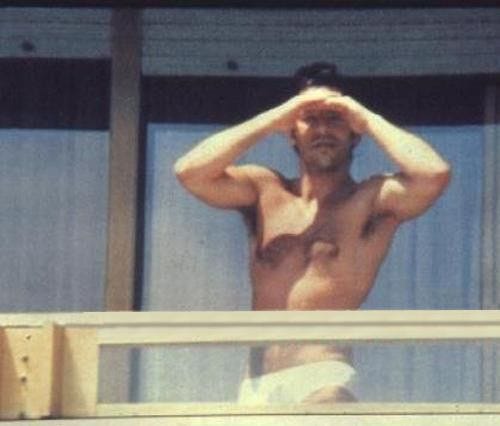
Do I know that the setlist switch of “Be True” to “Boom Boom” coincided with something specific Springsteen was attempting to exorcise, or a particular frustration or liberation? I do not! Marc Dolan, in his excellent book Bruce Springsteen and the Promise of Rock ‘n’ Roll, has done the research and posits, “By mid-June of 1988, Springsteen and Scialfa were definitely involved in a sexual relationship. When that relationship began, however, and how intimate it was, even during that summer, is known to only them.” There was also a huge buzz among the fan grapevine following the Shoreline Amphitheatre shows at the beginning of May where Bruce and Patti’s onstage connection felt decidedly more intense. We don’t know when the formal separation papers were filed, we don’t know more than what has already been established, and I’m also not sure we need more than we already have to make educated guesses. I’d honestly rather be looking for clues in music history or in Bruce’s connection to the blues than rehashing old gossip, but it’s not an irrelevant topic when you – no matter how unconsciously – act it out in public.
Trying to find the musical reasoning behind the inclusion of this particular song out of the entirety of rock and roll history is a bit of a snipe hunt. Bruce Springsteen’s musical alignment is based on soul, rhythm and blues, and the British invasion. When he was playing blues on a regular basis back in the late Castiles/Child/Steel Mill days, it was a mashup of styles, borrowing from Cream, Mountain, the Allman Brothers, and other similar modern interpreters. Steel Mill was very, very good at the kind of psychedelic blues that was popular at the time. But part of the reason Steel Mill ended when it did is because Springsteen had taken that particular musical form as far as it could go. He was making a respectable living at it and had built up a strong following. He was good at it and it sure sounds like they had a lot of fun playing that kind of music, but he realized that it wasn’t going to take him to the next level, and it mostly got left behind as he moved forward.
If you look at the cover songs that were part of early E Street Band sets, they focused on the Brill Building, the Girl Groups, garage rock -- the songs that were popular when they themselves were kids listening to the radio. Even on this very tour, he had a rotating Elvis slot (“Can’t Help Falling In Love” or “Love Me Tender”), the Geno Washington modification of “I’m A Coward,” or “Have Love, Will Travel” from the pride of Tacoma, WA, the Sonics. There weren’t a lot of strict blues songs in the repertoire -- there still aren’t! -- so a John Lee Hooker tune, no matter how foundational to rock and roll music, taking the second spot in the set remains a gesture with some meaning.
Its appearance in Los Angeles the other night is likely a couple of things: it’s a gesture towards the old timers who know and remember all of this, who listened to that original “Hello World” broadcast, and to the folks who came later and took the time to learn about that moment. There was also probably someone with a sign at this show or a previous one. Bruce still sings the song like his feet are on fire. He’s got a decent soul shouter voice and has fun when he gets to break it out. And finally, I don’t think it’s entirely accidental that this song should appear at one of the few shows Patti Scialfa has been present for. (And you got “Tougher Than the Rest” and “Fire” to boot.)
Watch this footage of “Fire.” Causation does not equal correlation.
It also feels like a sign that things are changing for the better over on E Street. Fingers fervently crossed.
I couldn’t work a full day and get to Worcester (it’s south of Boston) in time, while they had the latitude that let them get out a couple of hours early. ↩
Somehow I knew what the first three songs were, because I spent the fourth song running to the ladies’ room. The Spectrum was notoriously short on the number of women’s facilities, I had gotten in line as soon as I got in the building but wasn’t willing to miss the start of the show, so I decided that I could sacrifice “Two Faces” — only to find that the line was still winding its way around the concourse. That’s when some other women and I decided to commandeer an adjoining men’s room (they were all empty). Security came over and yelled at us that we couldn’t do that but we ignored them. That room had vibes for DAYS but I do not miss this part of it! ↩
Mostly! Sometimes he put another song in so it would be #3. (Hello, trainspotters!) ↩
This is why the bootleg from this show was called “Hello World” and there’s a generation of Springsteen fans who just refer to that show as “Hello World.” ↩
Honestly, it’s complicated and out of the scope of this newsletter, which is long enough ↩
Be glad I didn’t call it “the Boss signal.” I have some dignity. ↩
I made a phone call from the Joyce Kilmer Rest Area on the NJ Turnpike (because I still had to go to work the next day) where the first thing I said was something about what is going on with Bruce and the backup singer and how did no one mention this? ↩
